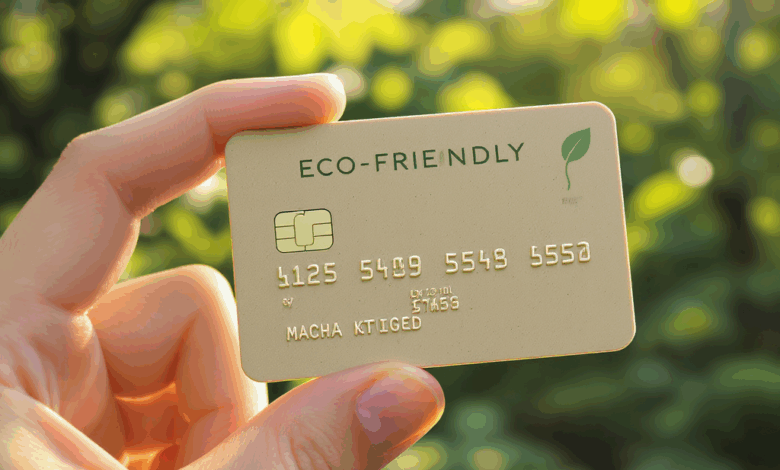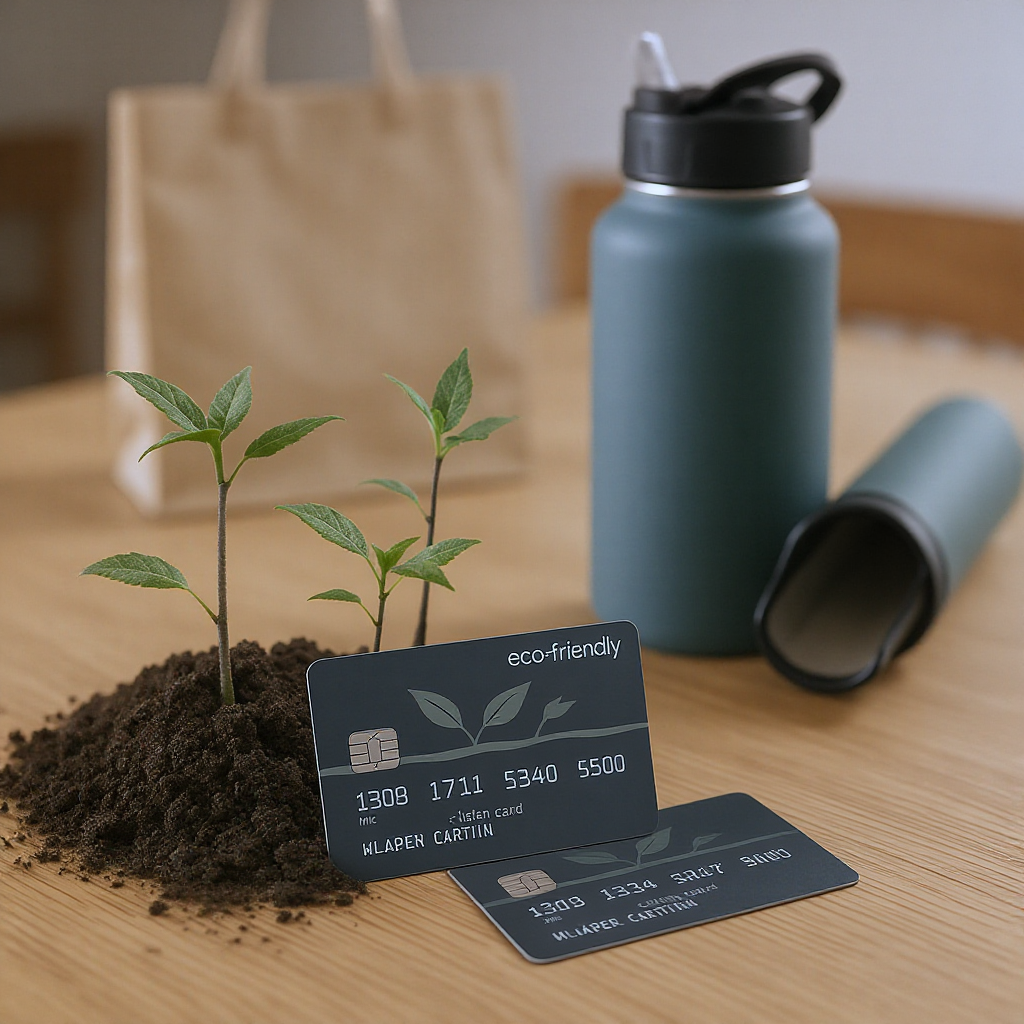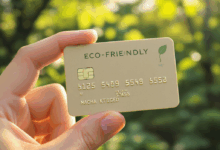Can Eco-Friendly Credit Cards Really Change How We Spend?

Have you ever paused to wonder if the credit card in your wallet could do more than just track your expenses? What if it could quietly plant trees, reduce plastic waste, or even help shrink your carbon footprint with every swipe? It feels almost too good to be true—can a simple piece of plastic actually make a real difference?
I remember the moment I first held an eco-friendly credit card, crafted not from traditional PVC but from biodegradable materials derived from plants. The texture was subtly different, the story behind it compelling. It made me question how something so ordinary could carry such an extraordinary promise. Yet, beyond the novelty, I found myself skeptical—is this just a marketing gimmick, or is there substance behind the green sheen?
The reality is, the landscape of credit cards is shifting. Financial institutions like Bread Financial and Mastercard are pioneering cards made from sustainable materials, aiming to slash plastic waste and carbon emissions. Beyond materials, cards like FutureCard Visa offer tangible incentives—think 5% cash back on climate-friendly purchases such as public transit or electric vehicle charging. Others, like the Aspiration Zero Card, take it a step further by planting a tree for every purchase you make, weaving environmental action directly into your daily spending habits.
But here’s the tension: does this translate into meaningful impact, or is it merely a feel-good gesture? The idea that our everyday financial activities could drive environmental change is tempting, yet it raises questions about effectiveness and authenticity. Are these programs transparent enough? How do they measure their carbon offset claims? Recent studies suggest that while these cards promote awareness and can nudge consumers toward greener choices, they are just one piece of a much larger puzzle.
For those curious about embracing this trend, the practical steps seem manageable. Start by reflecting on your spending—do you favor eco-friendly products or sustainable transportation? Next, explore cards that align rewards with these habits. And importantly, leverage tools offered by issuers to monitor your impact, turning abstract goals into visible progress.
This article isn’t about handing you a checklist but inviting you to explore how your financial choices intertwine with environmental responsibility. Could your next purchase be a vote for sustainability? Or is this simply another fleeting trend?
Let’s embark on this inquiry together—unpacking the promises, the pitfalls, and the possibilities of eco-friendly credit cards. What might your wallet reveal about your values, and how might it shape a greener future? The answers may lie not in the cards themselves, but in how we choose to use them.
When Your Wallet Takes a Stand Navigating the World of Eco-Friendly Credit Cards
It’s fascinating how something as routine as pulling out a credit card can suddenly feel like a statement—an extension of values rather than just a tool for transactions. I found myself pondering this when reading about how eco-friendly credit cards are gaining traction, not merely as financial instruments but as small agents of change. Could choosing the right card be a practical step toward sustainability, or is it just a symbolic gesture?
Understanding the Shift: More Than Just a Green Sticker
The transformation starts even before the card touches your hand. Traditional plastic cards, mostly made of PVC, contribute to environmental pollution. Recently, companies like Bread Financial have embraced polylactic acid (PLA), a biodegradable material derived from renewable resources such as corn. This subtle change could reduce plastic waste significantly over time. Mastercard’s commitment to shift entirely to recycled or bio-sourced materials by 2028 signals a broader industry trend toward sustainability in production.
But the innovation doesn’t stop at materials. What truly intrigued me was the integration of rewards that encourage sustainable behaviors. Take the FutureCard Visa, for instance. It offers 5% cash back on climate-friendly purchases—think public transportation, electric vehicle charging, or buying eco-conscious products. This isn’t just a perk; it’s an incentive aligned with environmental action. The Aspiration Zero Card takes it further by planting a tree for every purchase, intertwining spending with direct ecological impact.
How to Choose a Card That Aligns With Your Values
If you’re contemplating this path, it helps to start by reflecting on your spending habits. Where do you naturally lean toward sustainability? Is it in transportation, groceries, or household goods? This reflection can guide you toward cards that reward those specific behaviors.
- Evaluate Your Eco-Spending: Track your recent purchases to identify how much aligns with sustainable options.
- Compare Card Features: Look beyond just cash back rates. Does the card support carbon offset programs? Are there annual fees that might negate the benefits?
- Utilize Monitoring Tools: Many eco-friendly cards come with apps or dashboards—like the FutureScore app with FutureCard—that help visualize your environmental impact, making the abstract more tangible.
Practical Steps to Take Now
- Audit Your Current Spending: Use budgeting apps or your bank statements to see your eco-friendly expenditures.
- Research Cards That Reward Sustainability: Visit provider sites or platforms like The Impact Investor to compare options.
- Apply Thoughtfully: Choose a card that fits your lifestyle and financial goals, not just the green label.
- Use Rewards to Reinforce Habits: Redirect your cash back or rewards toward eco-friendly purchases or donations.
- Engage with Your Card’s Tools: Regularly check your impact metrics to stay motivated and informed.
A Thought to Carry Forward
While these cards offer promising avenues, I can’t help but wonder: Are we placing too much faith in consumer choices to fix systemic environmental issues? Could the allure of planting trees with every swipe distract us from the larger changes needed? Perhaps the real power lies in awareness—these cards might be a gateway to deeper engagement, nudging us to question how our daily financial decisions ripple out into the world.
So, what if your wallet isn’t just a repository for money but a mirror reflecting your values? And if that’s true, what stories do your cards tell about you? As we explore these questions together, maybe the real journey is not about finding the perfect card, but about discovering what sustainability means in our own lives—and how we want to act on it.
Would you be willing to let your spending habits speak louder than words? Or is this just another trend destined to fade? The choice, it seems, is both personal and profoundly collective.

Reflecting on the journey through the world of eco-friendly credit cards, it’s clear that these financial tools represent more than just a shift in materials—they embody a subtle but meaningful push toward integrating our values with everyday choices. Beyond biodegradable plastics and cash-back incentives lies a growing dialogue about how our spending habits can serve as small yet consistent acts of environmental stewardship. This ultimately means that while no single card can solve the vast environmental challenges before us, these options invite us to hold a mirror to our financial behaviors and consider their ripple effects.
What we gain from this exploration is a renewed awareness that sustainability isn’t just an abstract ideal but something we can engage with through concrete, manageable actions. By choosing cards aligned with our values, monitoring our impact, and redirecting rewards toward greener outcomes, we take tangible steps that reinforce habits and foster a deeper connection with the planet’s well-being.
If you’re intrigued by this intersection of finance and ecology, why not start today? Begin by auditing your current spending to identify opportunities for greener choices. Then explore cards that reward those behaviors authentically, and engage actively with the tools they offer to track your impact. These small actions, when multiplied, can nurture a personal and collective momentum toward sustainability.
Looking ahead, the evolution of eco-friendly financial products suggests a future where conscious consumption becomes increasingly embedded in our daily lives—not only through innovative rewards but also through systemic shifts in how companies and consumers interact. It’s a space worth watching, as these developments could redefine what it means to be responsible spenders in a world that urgently needs change.
So, as you close this reflection, consider: Could your wallet become a quiet but powerful voice for the planet? Or is this just another fleeting trend that will pass? Perhaps the answer lies not in the cards themselves but in our willingness to let our spending habits tell a story of care, commitment, and curiosity. What do you think your next swipe will say about you?


